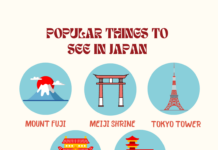Are you considering a Mekong River cruise in 2012? There is nothing quite like the vantage from a river cruise.
Along the centuries-old route of explorers, conquerors and compatriots, cities sparkle and villages bustle. Towns seem to turn invitingly toward the water. Traditional markets, churches and inns welcome travelers, while river life is animated with busy boats of all sizes.
River cruising puts travelers right at the heart of history – and beauty. From its source high up in the Tibetan Plateau the powerful Mekong River courses for over 3,000 miles through China, Burma, Laos, Thailand, Cambodia, and Vietnam, providing a lifeline for millions of people. Linger to enjoy the vivid scenery from the comfort of the ship then step ashore to explore past and present as it unfolds along the banks. Sophisticated and curious travelers can discover the exotic waterways of the East on the Mekong in Vietnam. Don’t miss out on your opportunity to unwrap the ancient mysteries while enjoying all the satisfying comforts of river cruising.
Mekong River Cruise 2012: Who Takes you There?
14 Day Fascinating Vietnam, Cambodia & the Mekong River from Ho Chi Minh City to Bangkok
This trip offers the flexibility to add on Luang Prabang, Hanoi & Ha Long Bay or Hanoi, Ha Long Bay & Luang Prabang.
Sails on the River Saigon, the newest (2012) & most intimate ship on the Mekong River.
14 Night Timeless Wonders of Vietnam, Cambdia & the Mekong Cruise tour
24-Day Grand Asia & the Mekong
7-Night Vietnam, Cambodia & the Riches of the Mekong Cruise priced from $1,899 pp
Available onboard the ms AmaLotus, ms La Marguerite, ms AmaLotus
 Mekong River Cruise Highlights: In Vietnam, cruise the massive Mekong Delta that covers an area of some 15,000 square miles. This picturesque area is dotted by rice paddies, fish farms, fruit orchards, and more. The rice produced in the delta accounts for over half of Vietnam’s rice production, so it’s no surprise that it is commonly referred to as the “rice bowl” of the country.
Mekong River Cruise Highlights: In Vietnam, cruise the massive Mekong Delta that covers an area of some 15,000 square miles. This picturesque area is dotted by rice paddies, fish farms, fruit orchards, and more. The rice produced in the delta accounts for over half of Vietnam’s rice production, so it’s no surprise that it is commonly referred to as the “rice bowl” of the country.
Near the end of the Mekong River is Cai Be. Close to Ho Chi Minh City, Cai Be is best known for its busy floating market, where locals transport goods to the market via rafts and boats. Nearby is Sa Dec, where the French writer Marguerite Duras lived. Duras had a love affair with Huynh Thuy Le, the son of a wealthy Chinese family, which became the inspiration for the film L’Amant-The Lover. The public can now tour the house of Huynh Thuy Le.
Chau Doc, situated near the Cambodian border, is one of Vietnam’s most multicultural cities with large Cham, Chinese, Khmer, and Vietnamese communities. The influence of these communities can be seen in their places of worship—mosques, temples, and churches—making it an interesting town to visit. See nearby Sam Mountain, with its beautiful views and numerous pagodas and temples.
After crossing the Cambodia border, visit Phnom Penh, Cambodia’s capital and largest city. The capital since the French colonized Cambodia, Phnom Penh has retained its French charm and is the center of politics, economics, and heritage. Here, learn about the sobering Khmer Rouge regime. Other highlights include the Killing Fields, National Museum, Royal Palace, and Silver Pagoda.
The quaint and charming town of Kampong Cham is an important trade and transportation center on the Mekong. Cambodia’s third largest city, Kampong Cham’s history—dating back many centuries—can be seen in its archeological treasures. Nearby is Wat Hanchey, a temple dating back to the 8th century, where you can enjoy spectacular views. Also nearby are the twin holy mountains of Phnom Pros and Phnom Srey (man and woman hill), where you will see the beautiful stupa as well as two huge Buddha statues.
Tonle Sap (Great Lake) is the largest freshwater lake in Southeast Asia and has been designated as a UNESCO biosphere. After the rainy season, the Tonle Sap backs up to form a huge lake, which provides the perfect breeding ground for fish, providing food for the people living in the floating villages on the lake. This is the most picturesque part of your journey as the river narrows and passes through villages and woodlands.
Siem Reap is the gateway to Angkor, considered by many to be the most spectacular ruins on earth. These ancient temples, built between the 9th and 13th centuries, are unmatched among ancient ruins anywhere in the world. See many of the temples, including spectacular Angkor Wat, built in the early 12th century and honoring the Hindu god Vishnu, and Banteay Srei, the 10th-century temple dedicated to the Hindu god Shiva.








